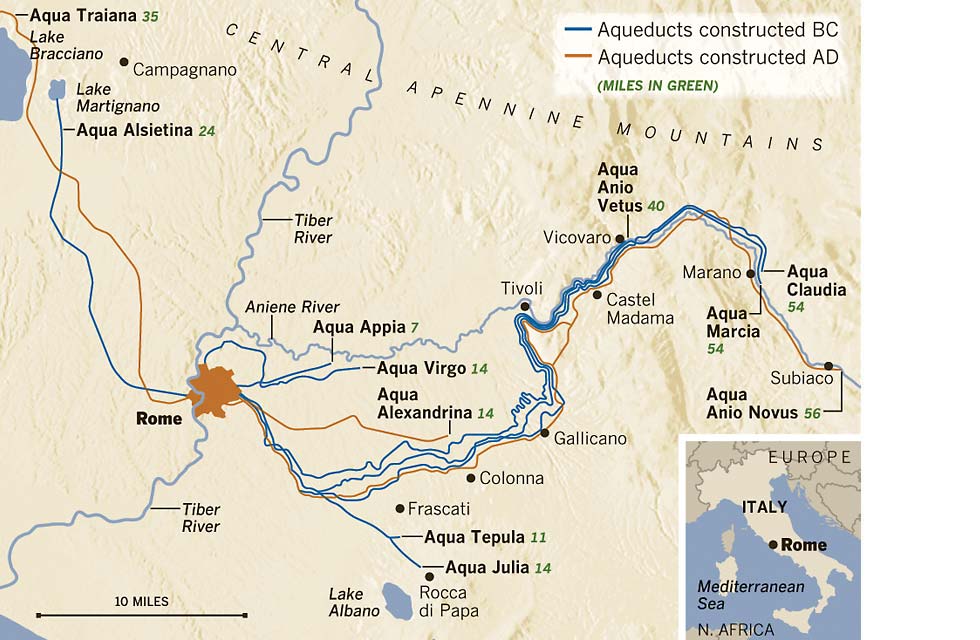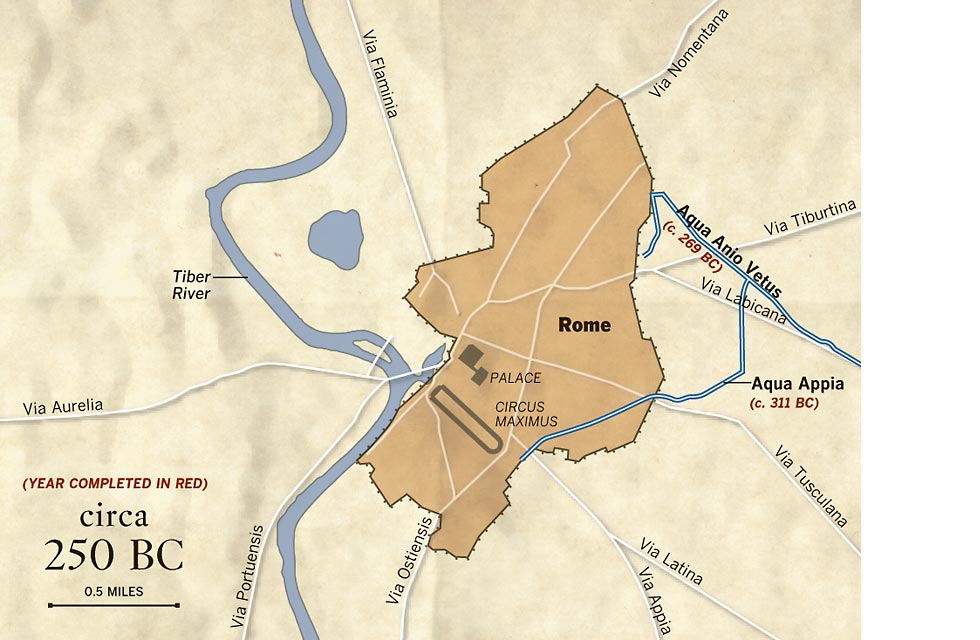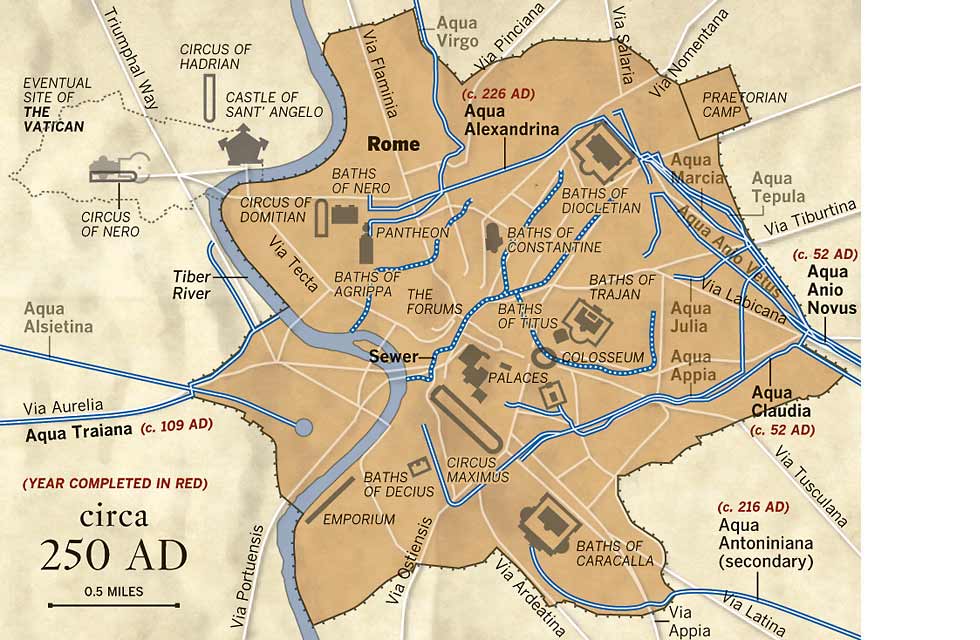Design of aqueducts
From whence they sprang
8th century BC, the reign of Romulus
3rd century BC, the Roman Republic
Augustus reigns at the birth of Christ
3rd century AD, the reign of Aurelian
Regarded as one of the greatest engineering feats of early civilization, the aqueducts of the Roman Empire continue to draw interest from archaeologists. The system is an example of passive irrigation, using only gravity to move water over many miles, from higher elevations to low-lying areas.
Rainwater collected in the central Apennine mountains north and east of Rome was carried by aqueducts to baths in the city from as far away as Subiaco, nearly 60 miles distant.
As the empire and city of Rome grew over the centuries, so did the population and demand for fresh water. As a result, the system of aqueducts into the city expanded as well.
As the empire and city of Rome grew over the centuries, so did the population and demand for fresh water. As a result, the system of aqueducts into the city expanded as well.
As the empire and city of Rome grew over the centuries, so did the population and demand for fresh water. As a result, the system of aqueducts into the city expanded as well.
As the empire and city of Rome grew over the centuries, so did the population and demand for fresh water. As a result, the system of aqueducts into the city expanded as well.
 BACK
BACK







